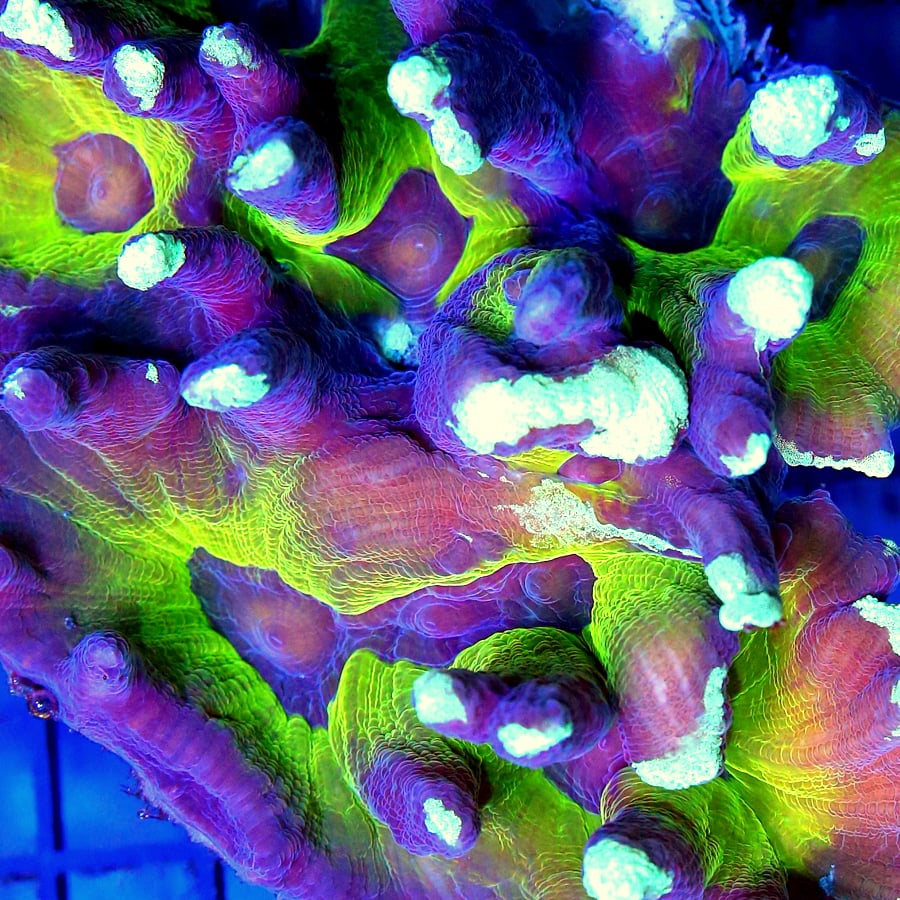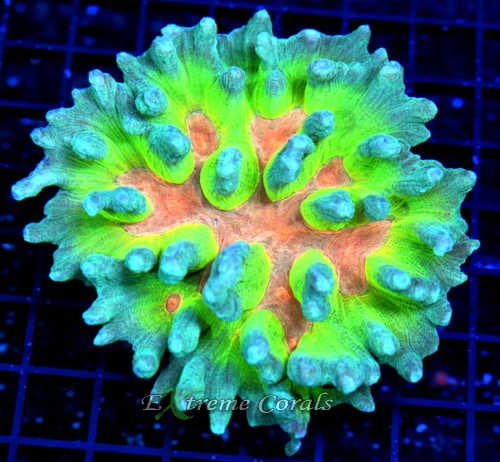Extreme Corals News and Updates
How to Care for Pectinia in a Reef Tank
Find out how to properly care for your new Pectina Coral with this "how-to" guide on the requirements for healthy Pectinia Coral from the #1 place to buy corals online!
Read along to find out the Lighting, Water Flow, Feeding, Placement & more when it comes to the care of your new Pectinia Coral
by scott Shiles • March 01, 2023
Looking to infuse your reef tank with a burst of color and texture? Pectinia coral, also known as spiny cup corals,
might just be the perfect addition. Belonging to the family Merulinidae, these corals boast fleshy, lobed polyps
that
come in a dazzling array of hues and patterns, making them a visually striking choice for any aquarium enthusiast.
Caring for Pectinia corals requires a meticulous approach to water quality and environmental conditions. These
corals thrive in alkaline water with a pH ranging from 8.0 to 8.4, as well as stable temperatures between 75°F and 82°F.
Maintaining optimal salinity levels between 1.023 and 1.025 is essential, along with ensuring low nitrate and
phosphate levels to support coral health. Regular water testing and maintenance are crucial for achieving and maintaining
these parameters, ensuring that your Pectinia corals thrive in their aquatic environment.

Water Quality Management
Regular monitoring and maintenance of water parameters are crucial for the health and well-being of Pectinia
corals.
This includes maintaining stable alkalinity levels within the range of pH 8.0 to 8.4, as well as ensuring consistent
water temperatures between 75°F and 82°F.
Salinity levels should be carefully regulated, with the ideal range falling between 1.023 and 1.025. Fluctuations in
salinity can stress corals and compromise their immune systems, making them more susceptible to disease.
Additionally, keeping nitrate and phosphate levels low is essential for preventing algae overgrowth and maintaining
optimal coral health. Regular water testing and the use of effective filtration systems, such as protein skimmers,
can help achieve and maintain these water parameters.
Lighting Requirements
Adequate lighting is essential for the photosynthetic processes of Pectinia corals, which rely on symbiotic algae
known
as zooxanthellae for much of their nutritional needs. Moderate to high lighting intensity is preferred, with a
spectrum
that includes blue wavelengths to promote coral coloration.
LED lights, metal halide bulbs, or T5 fluorescent bulbs are popular lighting options for reef aquariums and can
provide
the necessary illumination for Pectinia corals. It's important to adjust the lighting intensity and duration based
onthe specific requirements of your corals and other tank inhabitants.
Water Flow Management
Proper water flow is vital for Pectinia corals to remove waste and debris from their tissue and facilitate nutrient
uptake. Moderate to strong water flow is recommended, as stagnant water can lead to the accumulation of detritus and
the development of harmful bacteria.
Powerheads, wavemakers, and strategically placed return pumps can help create the ideal water flow patterns within
your aquarium. It's important to periodically adjust the direction and intensity of the water flow to prevent dead
spots and ensure even distribution throughout the tank.
Feeding Regimen
While Pectinia corals are primarily photosynthetic, they can also benefit from supplemental feedings to supplement
their nutritional requirements. Small particles of food, such as phytoplankton and zooplankton, can be offered
occasionally to enhance their overall health and vibrancy.
However, it's essential to feed Pectinia corals sparingly and remove any uneaten food promptly to prevent water
quality issues. Overfeeding can lead to nutrient imbalances and the proliferation of algae, which can negatively
impact coral health.
Placement Considerations
Careful consideration should be given to the placement of Pectinia corals within the aquarium to ensure their
well-being
and prevent potential conflicts with other coral species. Avoid placing them near aggressive or stinging corals that
may
harm or compete with them for space and resources.
Additionally, Pectinia corals should be positioned in areas of moderate to high water flow to promote nutrient
exchange
and waste removal. Avoid placing them in low-flow areas or directly against aquarium glass, as this can impede their
growth and cause tissue damage.
Pectinia corals are a captivating addition to any reef aquarium, offering a stunning combination of
color, pattern, and form that is sure to enhance any aquatic environment. By providing the proper care and attention
to
water quality, lighting, water flow, and feeding, you can ensure that your Pectinia corals thrive and flourish,
creating
a vibrant and dynamic underwater landscape that will delight and inspire for years to come. So why not elevate your
aquarium to new heights of beauty and elegance with Pectinia corals from ExtremeCorals today?
overall rating:
my rating:
log in to rate
Please log in to leave a comment.
For more information visit: additional resources

